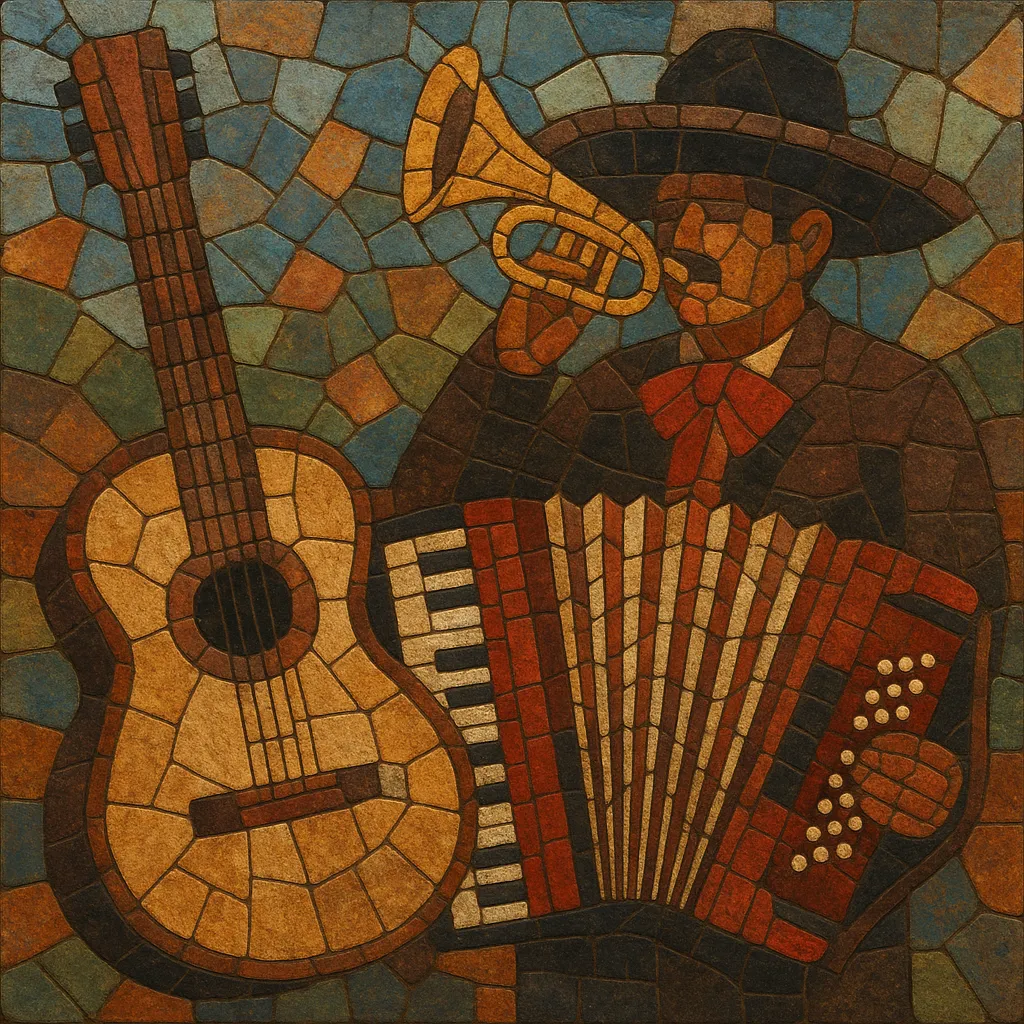Regional mexicano is an umbrella term for traditional and popular Mexican roots styles—such as ranchera, corrido, norteño, banda, mariachi, and newer offshoots—that share storytelling lyrics, dance-friendly rhythms, and distinctive acoustic ensembles.
While the industry label coalesced later, its musical DNA goes back to the Mexican Revolution era, when corridos and rancheras crystallized as powerful vehicles for narrative and sentiment. Typical textures range from brass-heavy banda and trumpet–violin mariachi to accordion-led norteño and guitar-forward sierreño, with characteristic rhythms drawn from polka (2/4), waltz (3/4), and huapango.
Songs often address love and heartbreak, regional pride, migration, everyday struggles, and, in some cases, outlaw themes (narco-corridos). Harmonies are functional (I–IV–V with secondary dominants and relative minor turns), vocals are expressive with belting and gritos, and arrangements foreground strong melodic hooks supported by tuba, guitarrón, tololoche, or bass-driven grooves.
Regional mexicano’s core took shape in early 20th‑century Mexico. During and after the Mexican Revolution, corridos became widely popular as sung news and social chronicles, while rancheras established a sentimental, often patriotic song form. Mariachi ensembles expanded instrumentation (violins, trumpets, vihuela, guitarrón), and northern border regions cultivated accordion‑driven norteño, shaped by Central European polkas and waltzes.
Cinema, radio, and touring circuits spread these regional styles across Mexico and into the Mexican diaspora in the United States. Iconic vocalists and groups standardized repertoire and performance practices, and banda sinaloense’s brass‑percussion sound solidified into a dancefloor staple. The period cemented the music’s roles at fiestas, rodeos, and community gatherings.
In U.S. and Mexican music industries, “Regional Mexican” emerged as a marketing and radio format that bundled ranchera, corrido, norteño, banda, and related styles. Bands modernized with tighter studio production, expanded horn sections, norteño‑sax variants, and romantic balladry influenced by bolero and pop. Meanwhile, substyles like sierreño foregrounded guitars and (often) tuba, and banda/pop crossovers reached larger audiences.
Streaming and social media catalyzed a new wave, including corridos tumbados/bélicos and electro‑tinged corridos. Collaborations with Latin urban and pop artists pushed Regional mexicano onto global charts. Younger acts updated lyric themes, aesthetics, and production while retaining the genre’s storytelling core and signature rhythmic DNA.


